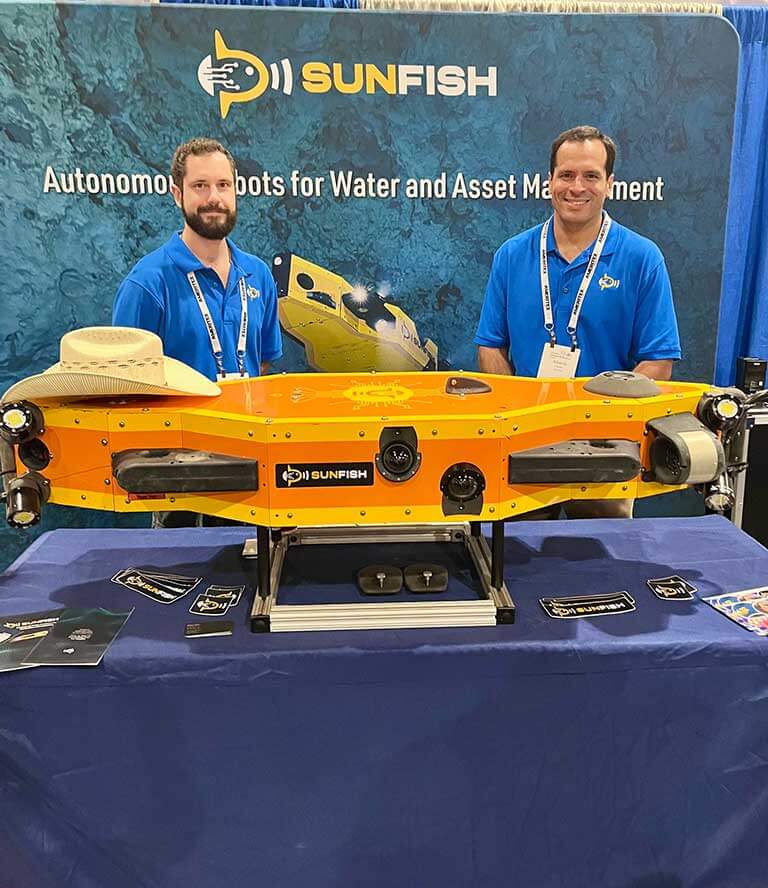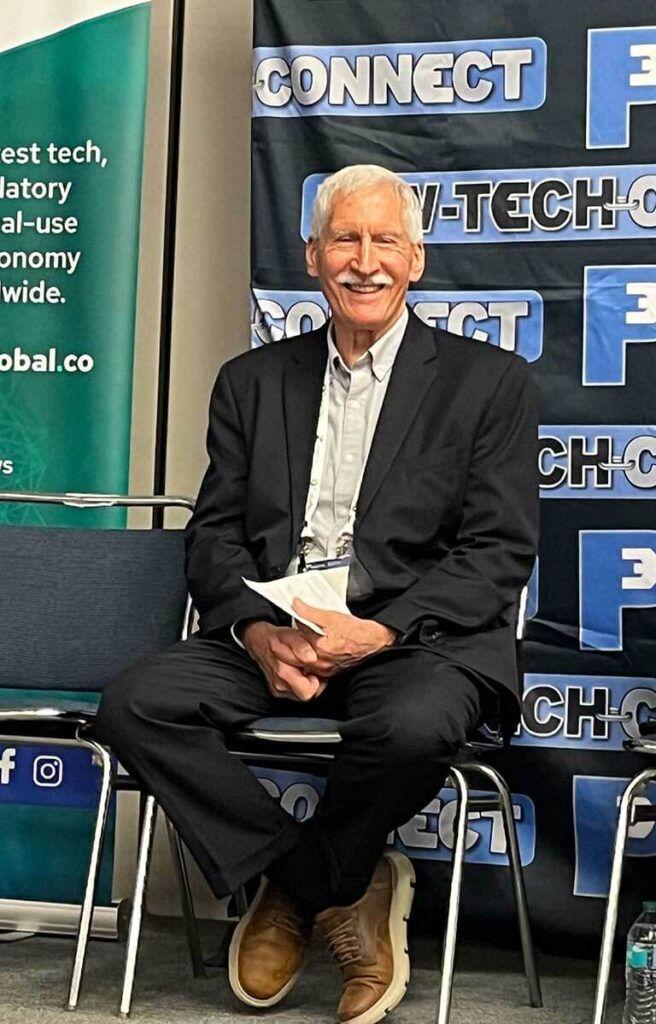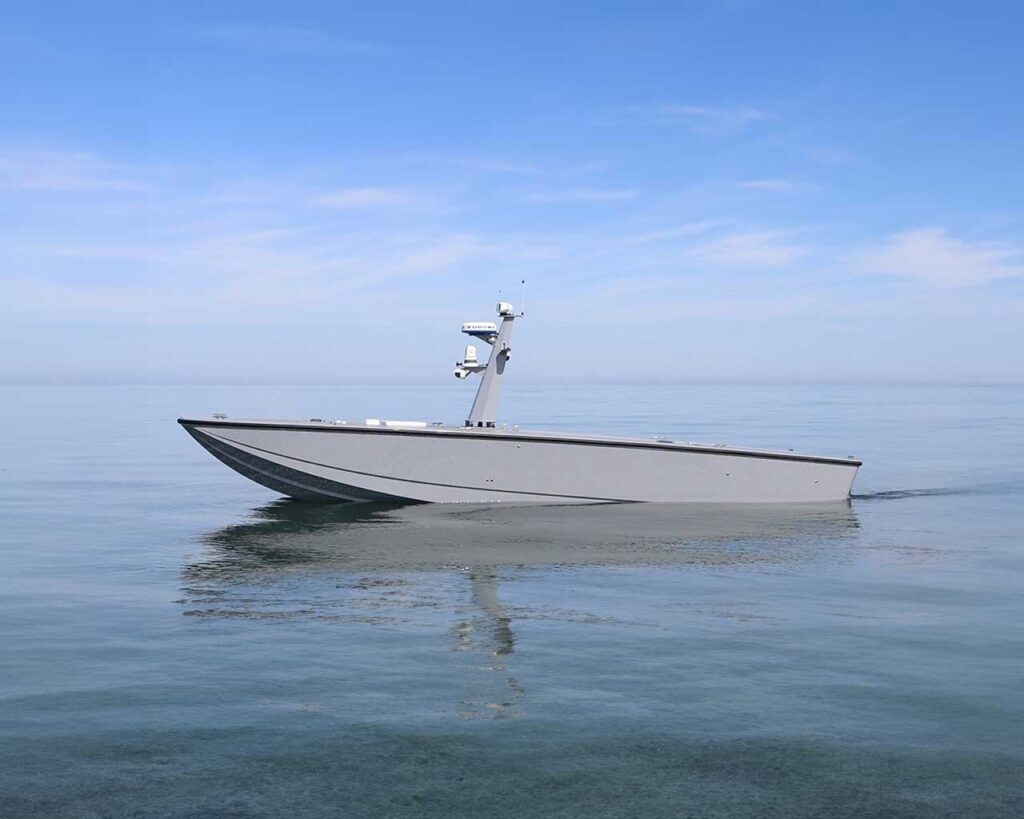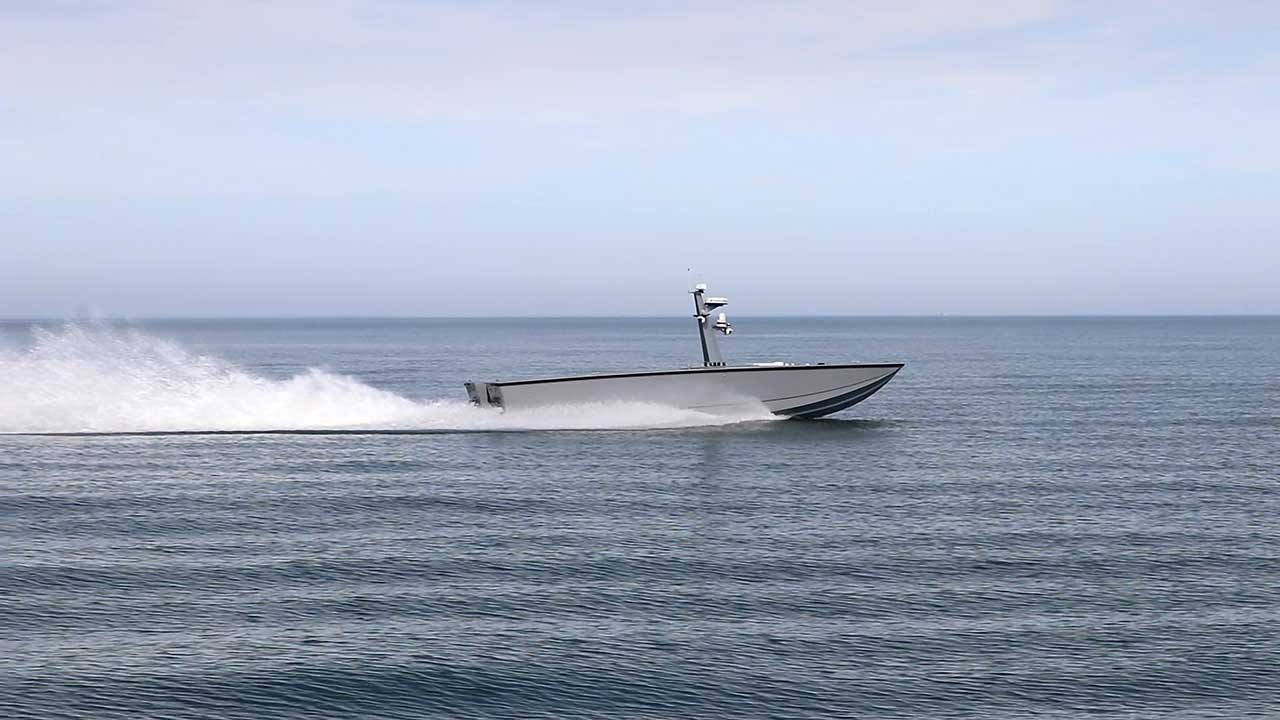Autonomy at sea is not just about replacing human crews with machines; it’s about redefining how we move goods, secure infrastructure, and project power across the world’s oceans. Technological readiness and the urgent need to address efficiency, safety, and security challenges drive the push for autonomy in maritime industries. From massive cargo ships navigating the world’s busiest shipping lanes to robot submarines patrolling the ocean’s depths, “sea tech” stands at the forefront of innovation and geopolitics. However, the real hurdles often revolve around regulatory, operational, and organizational—not just technical—readiness. The latest Full Crew newscast brought together leading experts—maritime attorney Alan Weigel (Blank Rome), Sunfish CEO Alberto Lopez, and naval technologist Victor Meyer (MARTAC)—to dissect the some of the latest developments in the sector: autonomous shipping trials in Singapore, advances in underwater robotics for subsea security, and the U.S. Navy’s adoption of autonomy in critical maritime chokepoints.

Autonomous Shipping in the World’s Busiest Waters
A landmark collaboration between the Maritime Port Authority (MPA) of Singapore and Nippon Yusen Kabushiki Kaisha (NYK), Japan’s largest shipping company, has forged the first large-scale trials of maritime autonomous surface ships—also known as MASS—in the Singapore Strait, the world’s busiest shipping lane.
While Japan has been at the forefront of testing autonomous technology for large surface ships, they’ve done so usually mostly in their territorial waters. Now, much further afield and with another country, Weigel explained, this alliance has even more significance:
- “Stress Test for Autonomous Technology:” Singapore Straits are the busiest shipping lanes in the world, with upwards of 2,000 ships a day in transit. “So if you can demonstrate that your autonomous technology can keep you from going ‘bump in the night’ in a place where there’s 2,000 ships a day… you probably met the standard,” he said.
- Singapore Embracing Autonomy: Singapore’s involvement is also notable because, as Weigel continued, “the Maritime Port Authority of Singapore probably has lagged somewhat behind” its tech-forward shipping sector, but is now “embracing testing of autonomy… in their home waters.”
- Challenging Longstanding Regulations: The trials could also challenge longstanding regulations. “The fact that the NYK and the MPA are going to agree on… operating ships autonomously with less crewmen on them than currently required by international regulations would be another significant development,” Weigel added.
Lopez applauded these efforts and questioned how the maritime industry could effectively move from successful tests to adoption at scale, given the current political and regulatory environment. “I think the technology’s here… But then how do you infuse that technology in the current regulatory space and what needs to change for adoption to happen?” he queried.
For starters, the International Maritime Organization (IMO) has to finish its new “MASS code” to interpret existing regulations for autonomous operations—especially concerning collision avoidance and the requirement for humans on board. Weigel explained that the first policy step will probably permit ships without a human on board, but will still require control from shore before allowing full autonomy, where artificial intelligence takes over and drives a ship from one port to another.
Meyer, drawing on his naval engineering background, pointed out that some technical challenges still remain before we achieve fully autonomous seafaring vehicles. “Whenever you scale engineering systems, you introduce complexity… as we scale these into larger and larger ships…Figuring out how you’re going to have a fairly simple, robust, reliable engineering plant without next to no manual component is probably, at this point, the biggest hurdle to achieving full autonomy on commercial ships.”
The Singapore-Japan maritime trials will be a proving ground for all of these things. And the world will be watching.

Safer, Faster, Cheaper: Underwater Robotics and the Battle for Subsea Infrastructure
Lopez, whose company Sunfish specializes in autonomous underwater vehicles (AUVs), spotlighted the rare applications of robotics—specifically remotely operated vessels (ROVs) and AUVs—to protect and defend (with mine counter-measures) subsea cables and pipelines, critical areas. With nearly 900,000 miles of subsea cable carrying the world’s data, and recent high-profile sabotage incidents, securing this infrastructure remains a global top priority. Lopez explained the reason for this prioritization. “The world is …exponentially going to be using more data. And a lot of that data gets transferred in these.. subsea cables,” he said.
Lopez also elaborated on operational complexity and technical challenges associated with these missions. “There’s a huge lag [in underwater autonomy] because of the harsh environment. It’s really difficult to do. We’re starting to use machines and at least operator-controlled robots to address this huge challenge,” he said.
For example, a recent demonstration showcased how a ROV located and neutralized underwater mines—a process that has traditionally required multiple missions and human divers. Lopez noted the multifaceted value of these systems “What they bring to the table, in the undersea space is that they make it safer…You no longer need humans deactivating these munitions… They make it faster… and cheaper.”
Meyer elaborated on the economic value of these assets worldwide, in terms of global importance. “It’s tough to overstate the importance of our undersea infrastructure. One only has to look at the Baltic and the two gas pipelines that were destroyed by an as-yet-unknown actor to fully understand… And people often underestimate just how dependent financial services are on these cables. A determined actor could cause serious disruption,” he explained.
“The North Sea is known for being a terribly difficult place to operate,” Weigel added. The fact that you can do this autonomously underwater without having to put people at risk just from the weather and the currents, is significant… The immediate issue of the sabotage threats to undersea infrastructure is very important. But there’s been a perennial and historical issue of unexploded ordnance in the North Sea… So the fact that you can use this technology for a real world, real time, critical issue today… is a really good development.”

Asleep at the Switch: Naval Autonomy and the Strait of Hormuz
Despite the availability of advanced autonomous surface and underwater vehicles, the U.S. Navy has been slow to adopt and deploy these technologies at scale, even as adversaries and allies move ahead in the volatile Strait of Hormuz and broader U.S. Central Command (CENTCOM) area of responsibility (AOR).
Meyer, with deep operational experience in the Gulf, was blunt. “I really do think the US Navy has been a bit asleep at the switch here, particularly in Fifth Fleet and in CENTCOM,” he said. “The U.S. Navy should be owning seabed to space with autonomous vehicles because the technology is mature enough and in some cases (e.g. Ukraine) it’s deployed and operational.” (See prior AG coverage of MARTAC’s Devil Ray autonomous vessel here).
But the U.S. Department of Defense has decided not to adopt it and certainly not to adopt it at scale. And the proof of concepts that they’ve adopted have not been particularly successful.” Meyer described a “complete disconnect” between the Pentagon and the Navy. “The Navy is… begging for [autonomy], and the OSD (Office of the Secretary of Defense) is pointing to the Navy and saying, ‘I don’t have a requirement from you’.”
Yet, Meyer noted, the operational advantage of unscrewed vessels remains unparalleled. “I’ll take the performance benefits of an autonomous, swarming boat any day defending against an Iranian IRGC manned vessel just because the autonomous boats are three or four times faster and they’ll take a 9-G turn. Whereas that’s clearly impossible with a manned vessel,” he said.
So, what’s the hold up: cost, culture, or politics? Meyer believes that in-situ development of combat capabilities is required. But this doesn’t really exist in the U.S., in contrast to NATO nations and other partner nations.
Weigel observed that the US Navy has lost its ability to do expert experimentation. “We used to be very good at taking something that might be good enough and sending it out, testing it and saying, all right, let’s try something different…” That no longer happens. Weigel lamented that today, “We build the ‘Tiffany Navy’ and we can’t figure out how to… pick something that’s good enough, deploy it, figure out what needs to be changed on it.”
From his perspective as a small tech provider, Lopez added that procurement challenges exacerbate the problem. “It’s just a long cycle with the Navy. Huge, tough market,” he said. “We just have not been able to start that cycle with the Navy. There’s… so many steps for a small company to do. And then there’s all these requirements just on the procurement side.”
Meyer warned that while the U.S. may have “dodged a bullet” here or there, the cost is that “we will not have tested the Navy the way they need to be tested…” He continued, “Unfortunately, that means that we will potentially not get the capability out to Taiwan or the South China Sea, where low-cost drones need to be deployed quickly and where we still have the opportunity to deter.”
Charting A Course For Sea Tech’s Uncharted Waters
The “Sea Tech” Full Crew made clear that maritime autonomy is not a distant vision—it’s a present reality—one fraught with both promise and peril. The technology for autonomous ships and underwater vehicles is advancing fast, but regulatory frameworks, engineering reliability, and institutional inertia remain significant barriers.
As Weigel put it, “Autonomy is here and it’s coming really quickly. I think it’s more of an adoption discussion.” It’s a discussion that must continue and accelerate, because the stakes are high: global trade, critical infrastructure, and national security all hinge on how quickly and wisely the maritime sector adopts and adapts to these new technologies.
The next chapter in sea tech will be written not just by engineers and entrepreneurs, but by policymakers, regulators, and military leaders willing to experiment, adapt, and embrace the future. Hopefully they will heed Meyer’s closing warning: “You may not be interested in unmanned systems, but unmanned systems are interested in you.”
By: Dawn Zoldi

